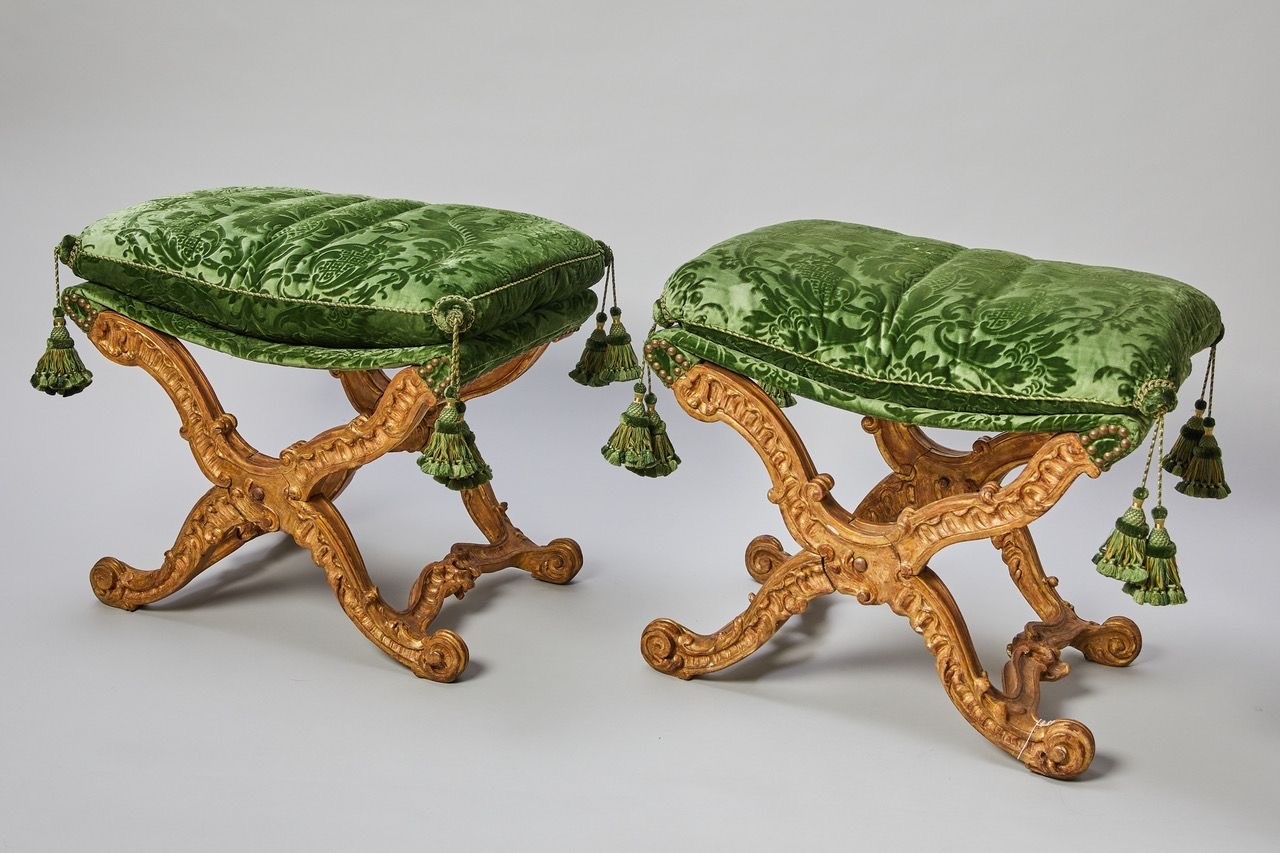

A pair of Italian giltwood carved folding stools, with a rectangular loose cushion seat, above an ‘X'-frame baluster supports, carved with scrolls, centred by a patera, joined by shaped stretchers centred by a stylised scallop-shell, on outward scrolled feet. Soon in a private collection in US
Provenance
Probably in the Turin Royal palace,1740.
A private collection in England.
A private collection in Germany.
Literature
Enrico Colle. Musei e Gallerie di Milano. Museo di Arti Applicate, castello Sforzesco, museum catalogue. Pag.266, n.414, inv.989-990. Electa Milan 1996.
Detail Description
Our pliants are modelled after the iconic ones designed by Filippo Juvarra (1678– 1736) for the Gabinetto Cinese in the Turin Royal Palace. The present examples were more probably after a design by Benedetto Alfieri (1699–1767), the successor to the Sicilian Juvarra as royal architect. Alfieri designed them for another interior of the Turin Royal Palace, the Gabinetto delle Miniature, where some similar stools can still be found. An almost identical pair but regilted in XIXc is in the collection of castello Sforzesco in the Milanese Museum of decorative arts.
The pliants was considered a seat of favour but also of subjugation. It marked the privileged social rank of those who were allowed to sit in front of the king or a prince of the blood. More often, however, they remained unused, being displayed in the official apartments to accentuate the standing position of those who had neither the right nor the honour to sit before the majesty of a powerful person.
Print Format
Additional images












